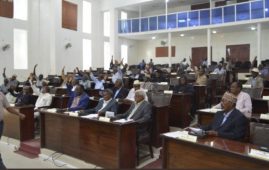(Toddy Thairu – Senior Advisor, Tax Services, KPMG)
In order to attain middle income status by 2025 economists advocate that Ethiopia’s government switch its focus from public expenditure to promoting private investment
AS AFRICA’S fastest-growing non-energy economy, Ethiopia is fast becoming the preferred investment destination for foreign investors coming into Sub-Saharan Africa. According to the World Bank, Ethiopia has had an average Gross Domestic Product (GDP) growth rate of about 10.6 per cent for the past decade compared to the Sub-Saharan regional average of 4.6 per cent.
Ethiopia’s rapid economic growth is largely attributable to intense government projects aimed at achieving the Millennium Development Goals (MDGs). The government’s current five-year Growth and Transformation Plan (GTP) for 2010/11-2014/15, envisions sustainable means of economic, social and environmental development in a bid to achieve the MDGs. Some of the key goals of the GTP include, maintaining a rapid GDP growth of at least 11 per cent per year, an increase in the country’s foreign exchange reserve (which currently stands at just over two months import cover), an increase in the road network from 49,000 km to 64,500 km, construction of 2395 km of railway line and an increase in the power generation capacity from 2000 MW to 8000 MW.
However, despite all these positive development efforts, economists claim that the government must now switch its focus from public expenditure to promoting private investments in order to maintain a steady economic growth, so that the country can realise middle income status by 2025.
The government has in the recent past demonstrated a willingness to support private investment with measures such as the introduction of the Ethiopian Investment Agency (the EIA) as a ‘one-stop-shop’ where investors can obtain investment licenses, incorporate and register companies among other services. The government has also established the Privatization and Public Enterprises Supervising Agency (PPESA) in an effort to enhance the privatisation of state-owned enterprises.
Attractive tax incentives such as corporation tax and customs duty exemptions for manufacturers and exporters are now guaranteed under the recently enacted 2012 Investment Proclamation. One of the difficulties facing foreign investors in Ethiopia is the restriction of foreign investment in major sectors such as financial services, telecommunication, importation and retail business among others, which are restricted to either the government or Ethiopian nationals. The other major obstacle facing investors in Ethiopia is that of the foreign exchange controls that are enforced by the National Bank of Ethiopia (NBE). For example, a trader seeking a foreign currency-denominated loan facility is required to obtain approval from the NBE. Equally, an investor looking to make loan repayments or repatriate profits from Ethiopia either via dividends, interest or technical and management fees must obtain approval from the NBE.
While the procedure of obtaining the NBE’s approval is well documented and pretty straight forward, the reality is the shortage of foreign currency in the country makes the process of making any foreign currency payments out of Ethiopia a nightmare. Attaining middle income status is really key for Ethiopia with about 25-30 per cent of the population living below the poverty line.
With the current GTP term coming to an end, the government’s responsibility now is to come up with another plan that will focus on private development and ensure that the country attains middle income status by 2025.
*******************
Source: KPMG International Cooperative





